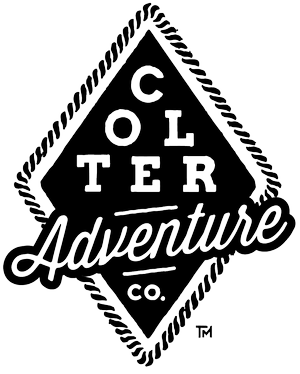Last year I met a man named Dave Schroader. After a few minutes of talking I found out that Dave is a canyoneering enthusiast with many years experience. Dave recently sat down with me to talk about the basics of the sport. This is our conversation:
Colter Co.: How long have you been canyoneering:
Dave Schroader: 14 years
CC: How did you get into it?
DS: I had a friend that asked me to assist with a climbing activity for a scout troop. When I started getting some training in climbing it sort of morphed. You start talking to people and you hear about these really cool canyons in southern Utah and you want to go and explore. You have to have some climbing skills and some rappelling skills.
CC: What kind of training is available?
DS: They do offer training and certification. It’s changed in the last 14 years. When I started, I could only find one individual who gave structured training. Rich Carlson in Southern Utah. He’s been guiding people in Arizona and southern Utah. Now he offers multiple classes. You can be certified in rescue and canyoneering. There are others that offer classes, too. In fact University of Utah offers a course in canyoneering now.
CC: What do you like most about canyoneering?
DS: It’s hard to explain to people who haven’t seen it. I get to see landscapes and country that no one else sees, because you can’t get to them unless you can rappel. You can’t get to them unless you have the technical skills. You’ll find places where you rappel down a hole in a cathedral ceiling that’s been washed out over hundreds of years. You can’t get to that, unless you have the skills to start at the top and work your way down. So I get to see geometric forms and sandstone formations and strata that no one else gets to see unless they work through those canyons. That’s what’s interesting to me. I took a friend to Zion National Park. We were just hiking to the canyon itself and he kept telling me how gorgeous it was. That it was the most beautiful thing he had ever seen. I kept telling him, “Wait ’til we get in the canyon! You haven’t seen anything yet!” Once we got into the canyon he was mesmerized. You just don’t get to see that stuff, unless you’re working your way through those canyons.
Image gallery courtesy of Dave Schroader:
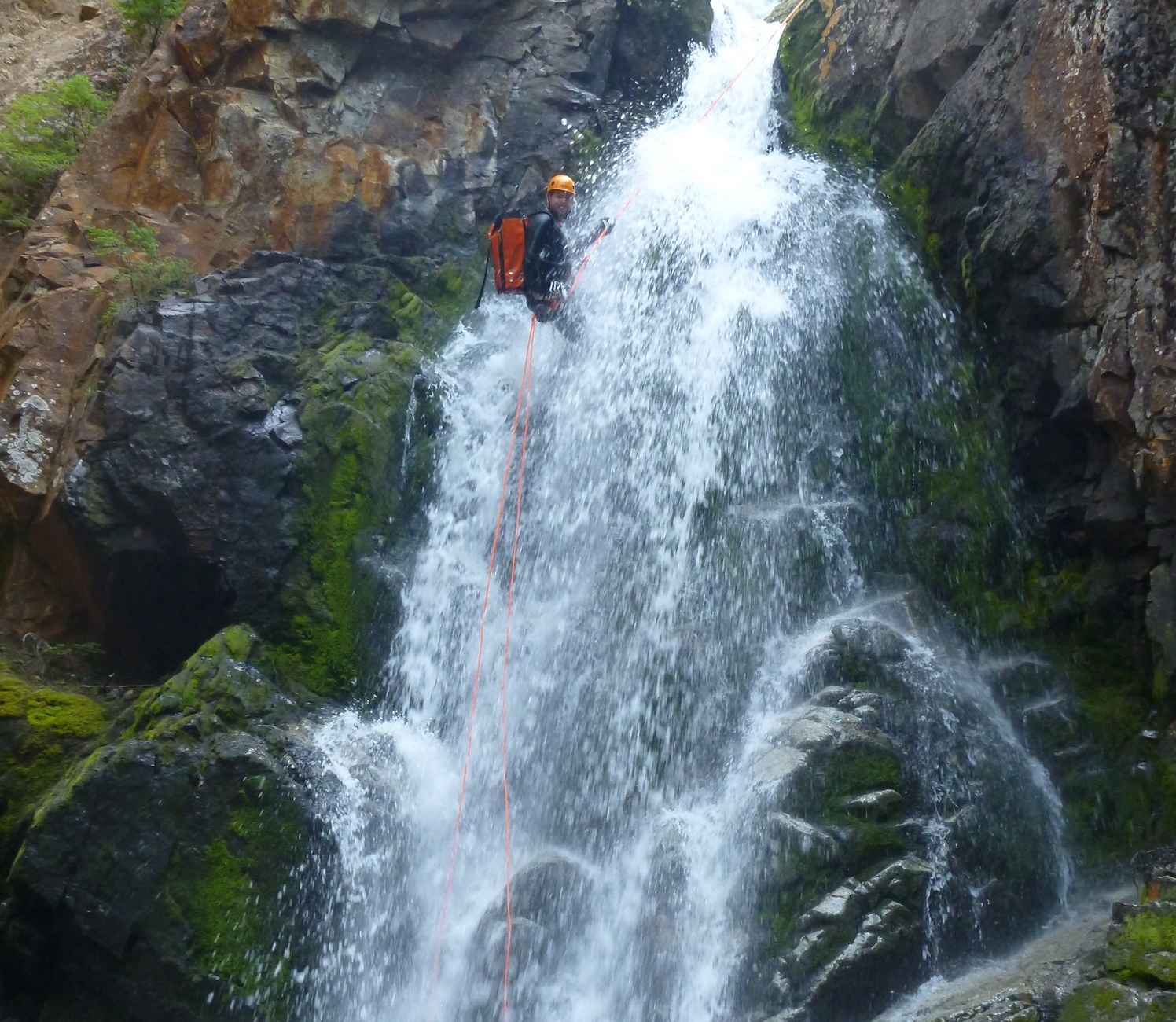
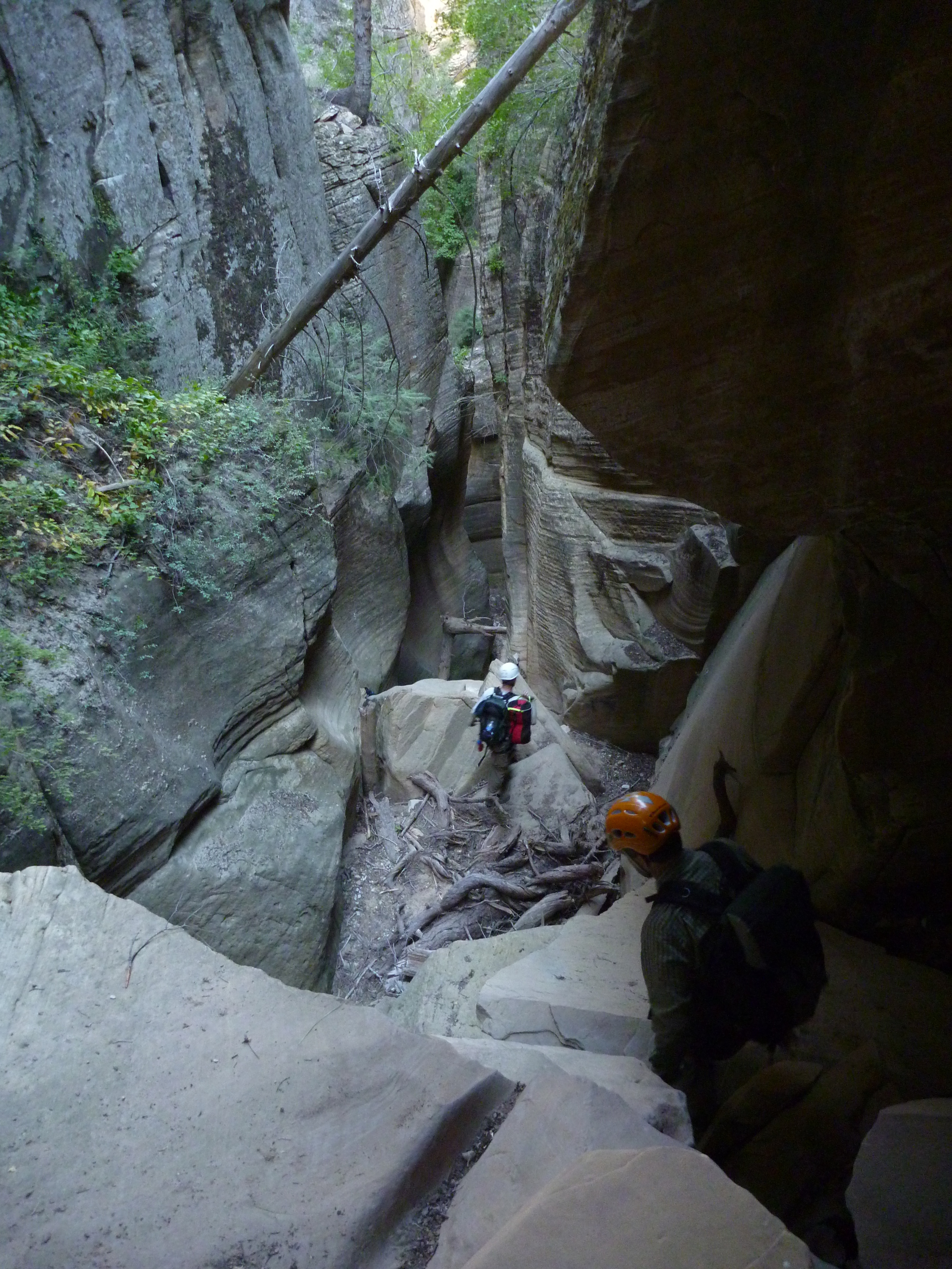
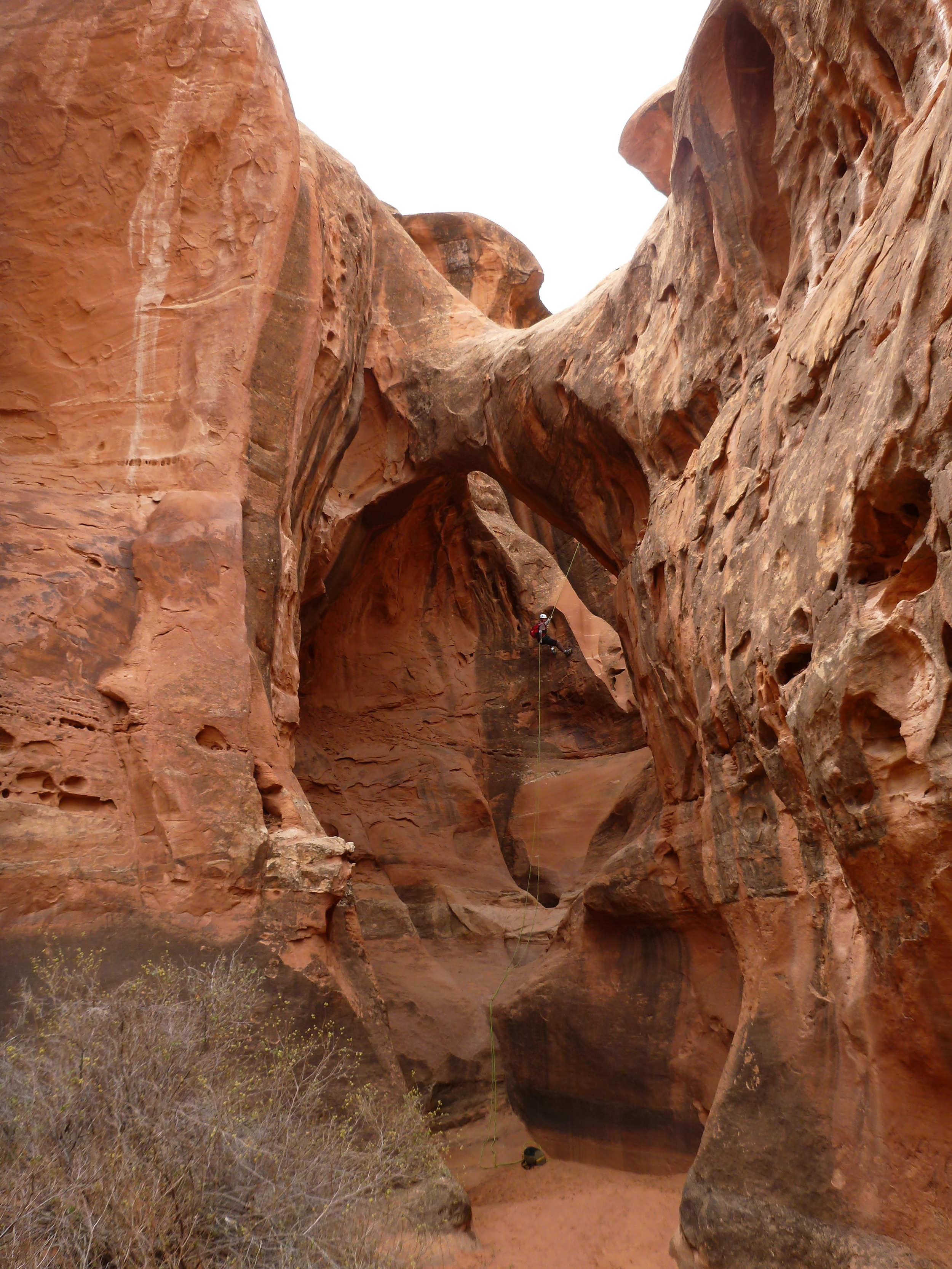
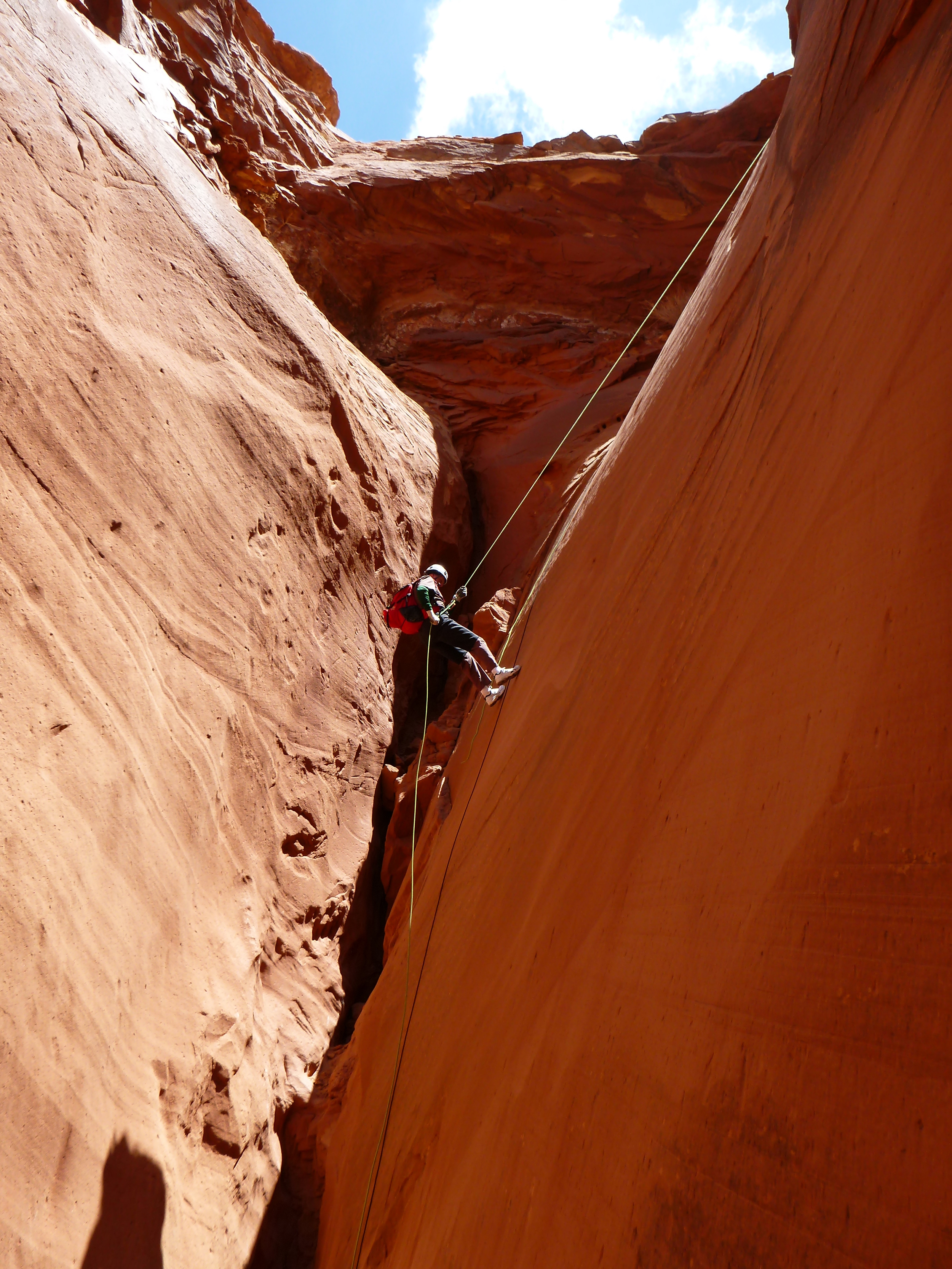
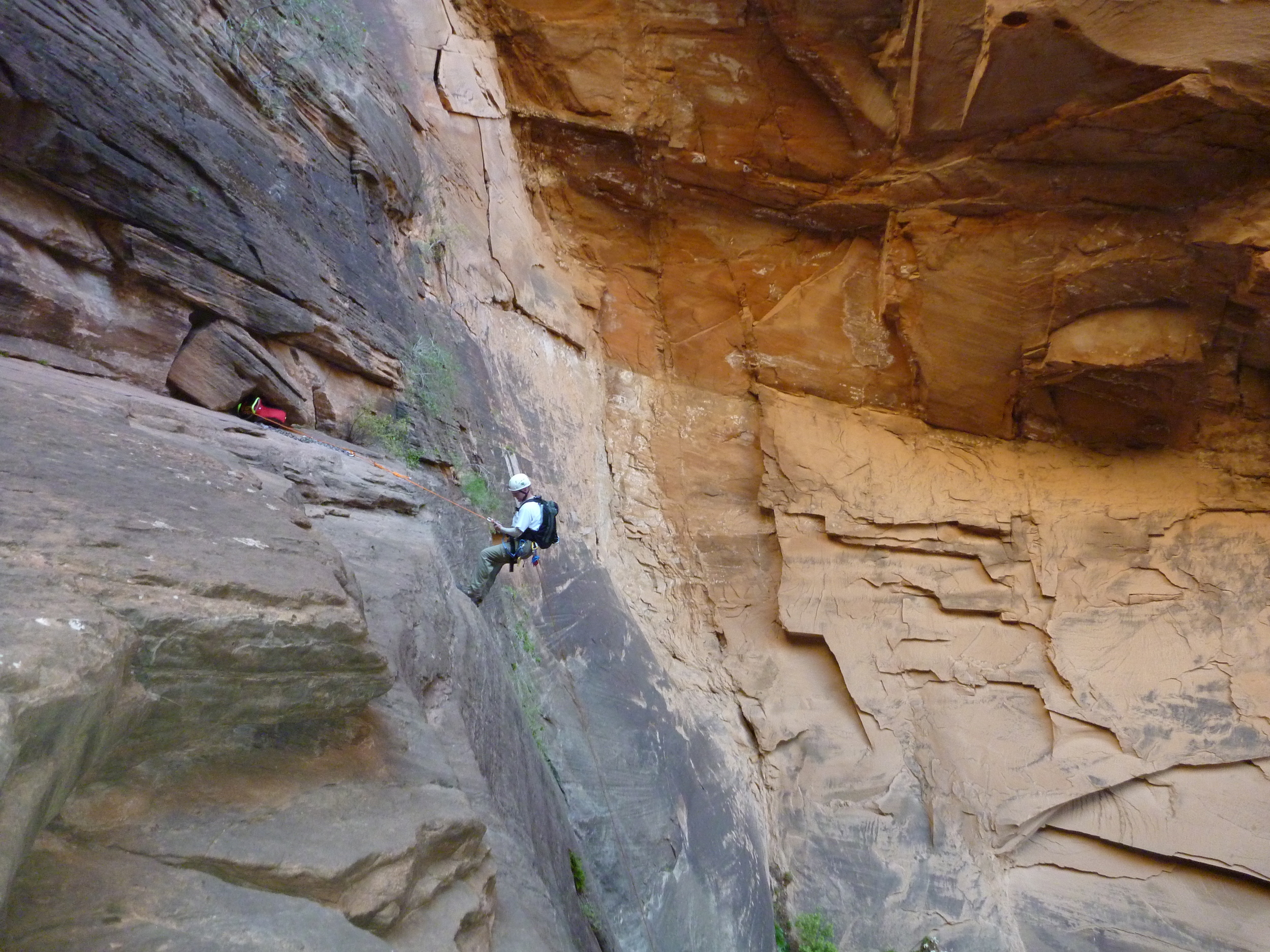
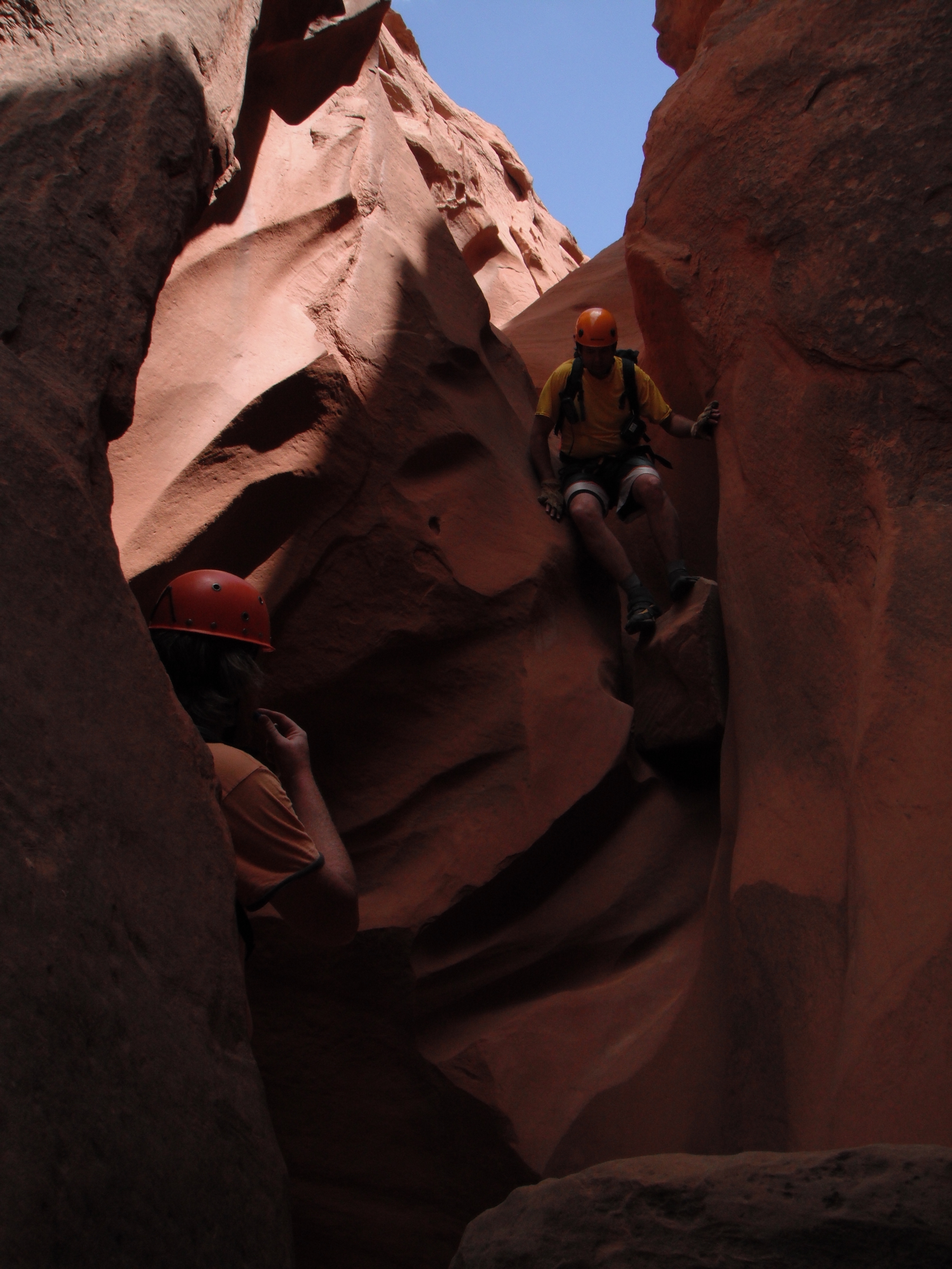
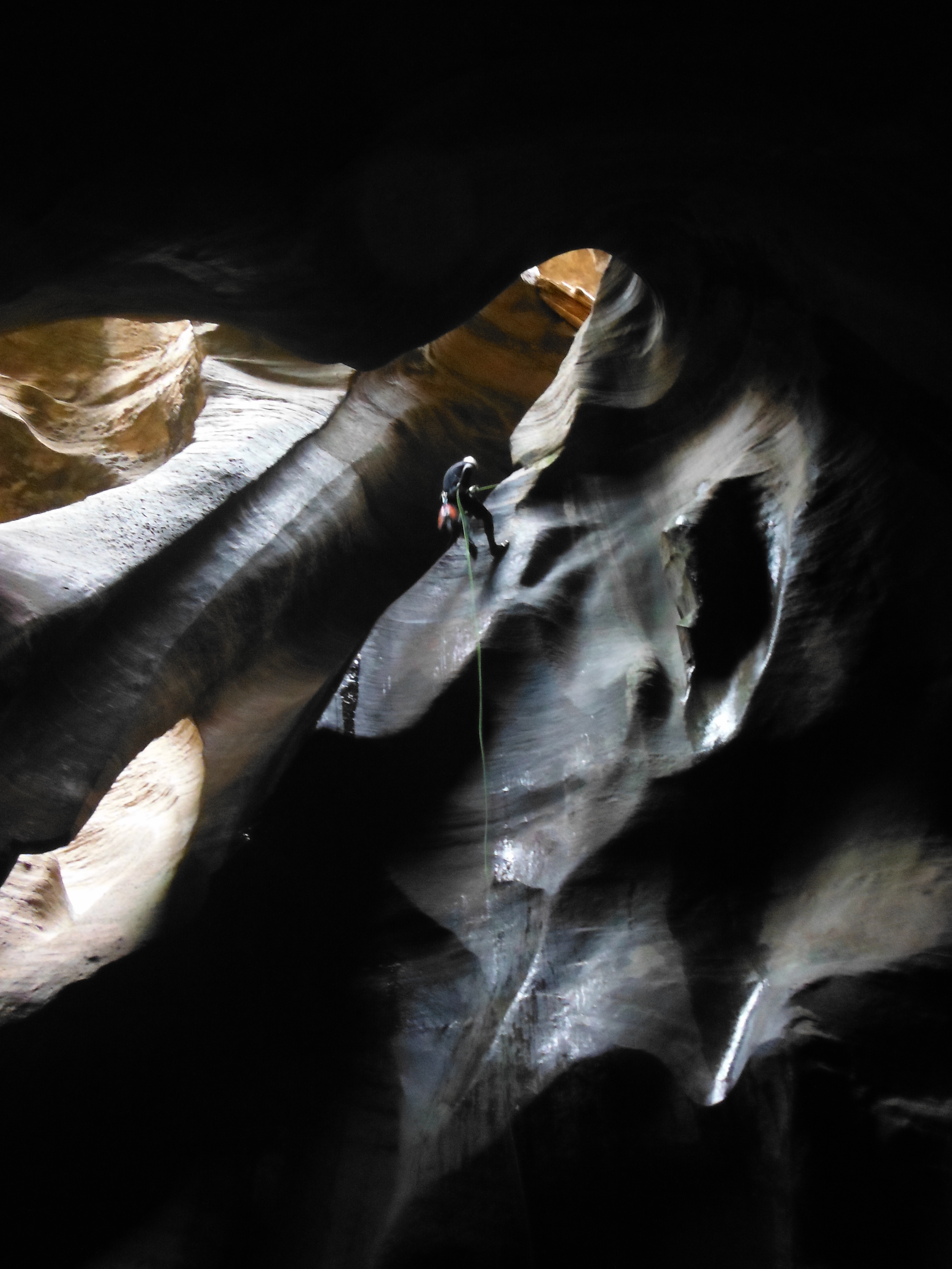
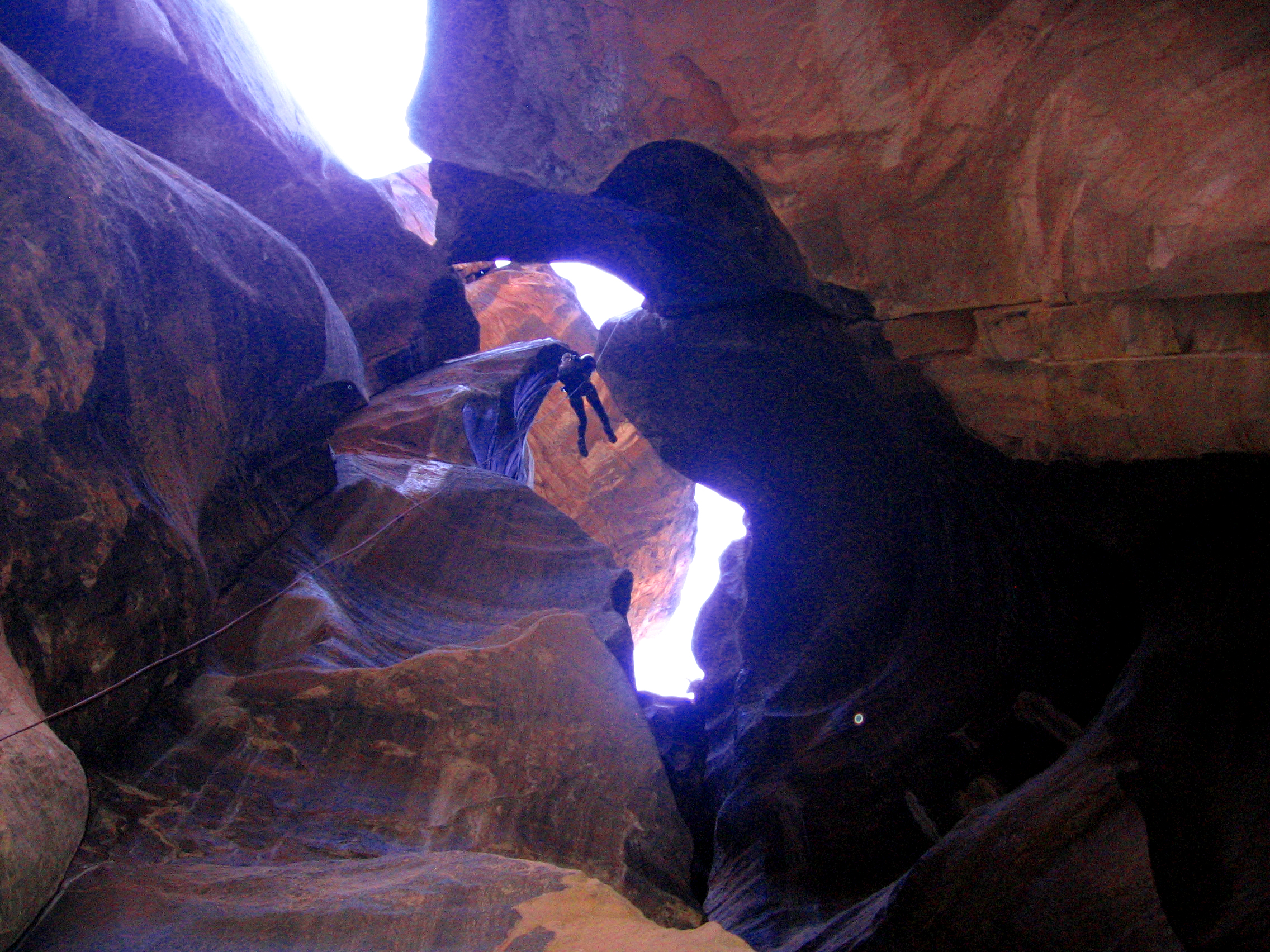
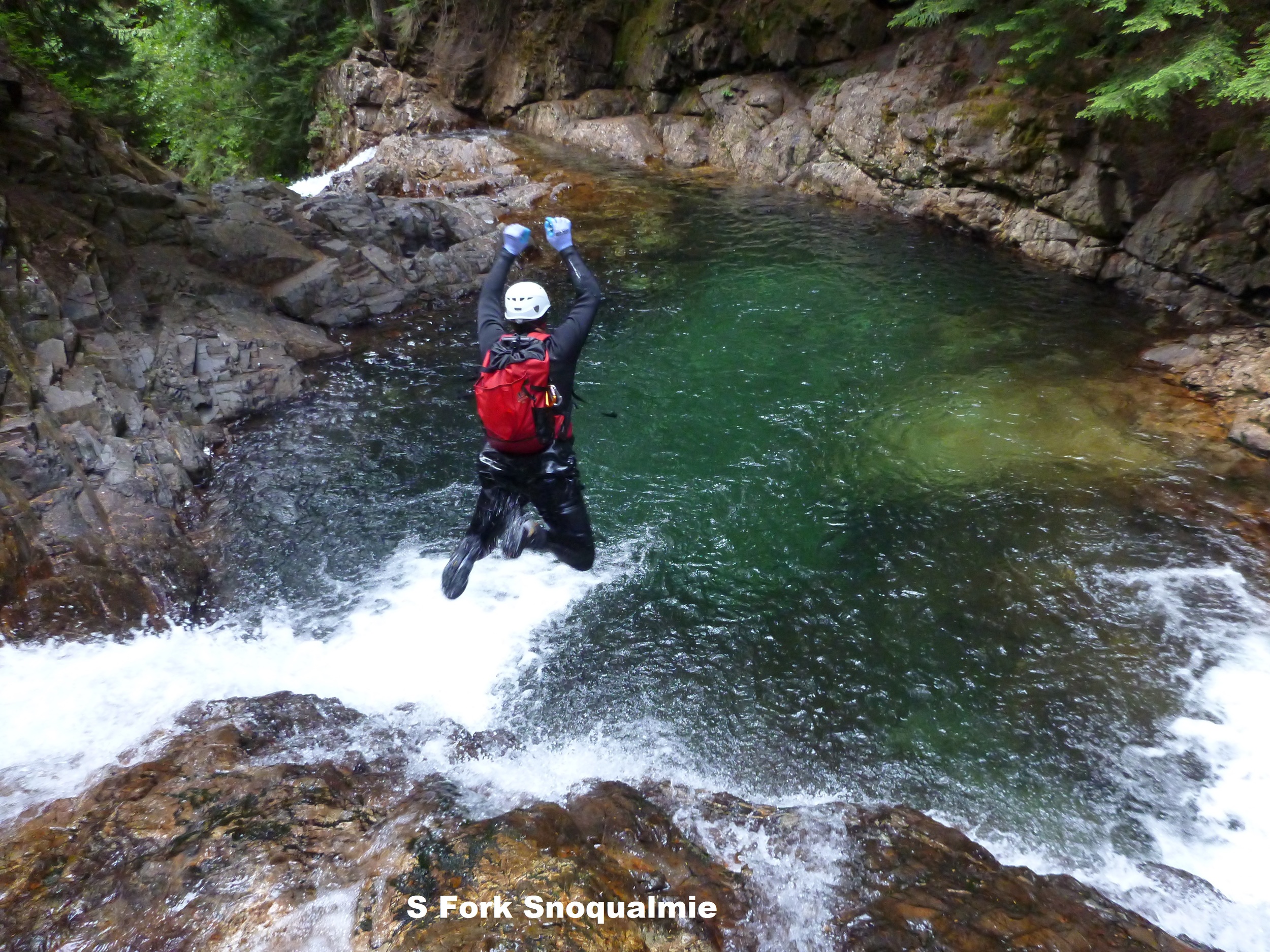

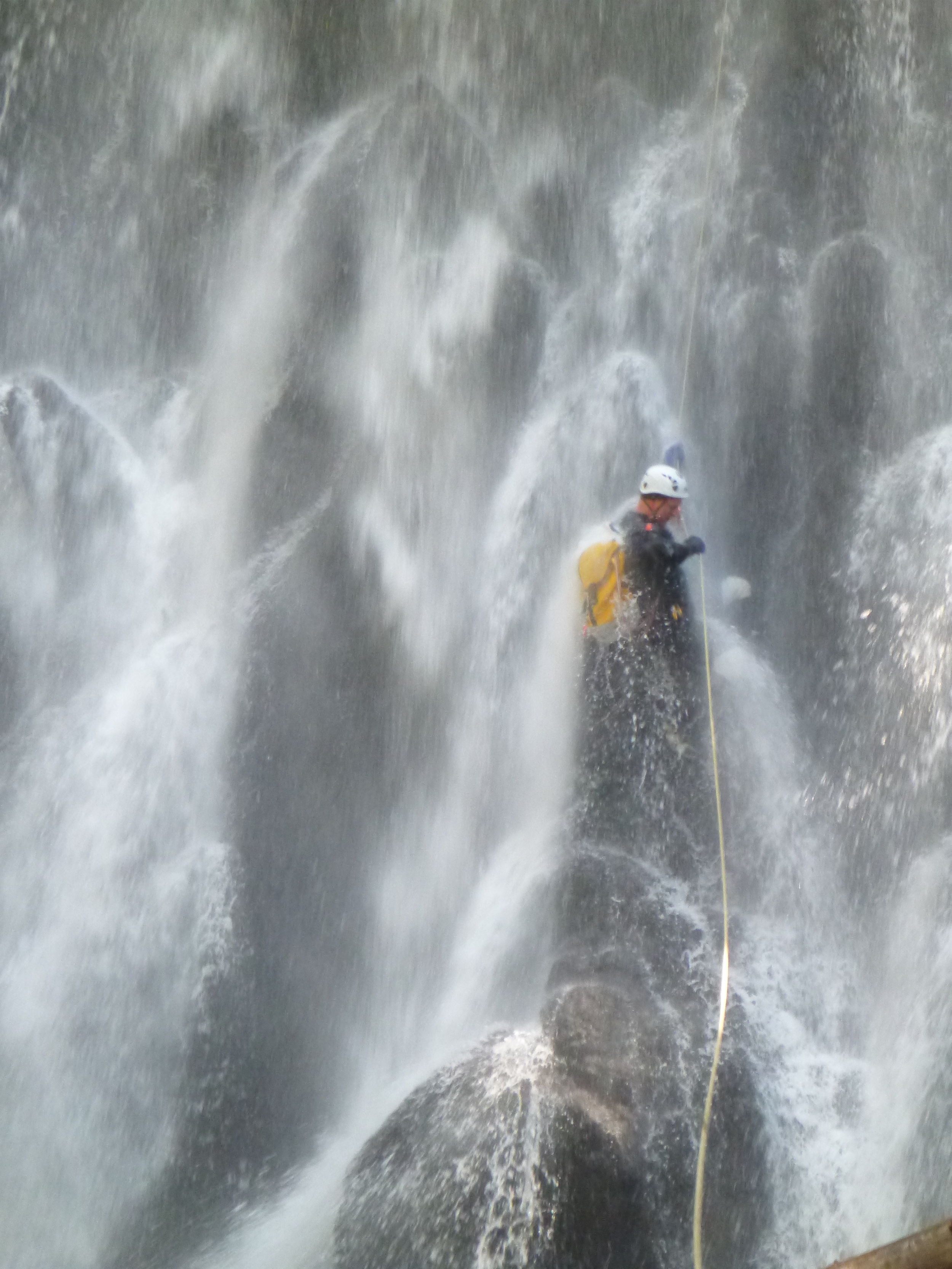
CC: Where’s your favorite place to go? If this is anything like fishing, you’re probably not going to tell me your real favorite place…
DS: I have no problem telling you. I have no secrets. I have two favorite places. If it’s a water canyon, I absolutely love the south fork of the Snoqualmie river. Jumps into large pools, rappels down large waterfalls, climbing up and down the waterfalls. My favorite dry canyons are in Zion. Imlay canyon is really hard to beat. It’s an extremely difficult canyon to do, but it’s one of the most fun I’ve done. My number one favorite canyon is called Mystery. Mystery Canyon. If you’ve been to Zion and you’ve walked up the river course as you walk into the slot canyon, you get up about a mile in the canyon and look up the wall. You’ll see people rappelling down the little waterfall that comes into the canyon. That is just a fantastic course to do.
CC: What kinds of skills are necessary?
DS: If you want to do technical canyons you need to build up your skill set. That set of skills is typically some climbing experience. Figuring out holds. Developing your comfort level of foot holds and hand holds. Working your way up difficult climbs. You have to learn how to use various knots. You have to tie knots if you’re going to do rappelling. You’ve got to get a harness on, you’ve got to have rappelling gear. You have to have a lot of training, as far as I’m concerned. If you go into these canyons, there’s no one that’s going to rescue you. If you remember the Aron Ralston story he had to cut his own arm off to get out. If he had gone with a partner, his partner could have helped rescue him. Potentially. So you want to go with a partner. You also need to learn how to do self rescues. If you’re stuck halfway down a 200’ rappel with one rope, and you have one rope only, no one is going to come rescue you for hours. Hopefully they can come find you. Hopefully they are bringing a different rope. Hopefully they have the skill set to haul you back up. You have to learn how to do rescues and learn how to get people unstuck from a rope. You have to learn how to get yourself unstuck from a rope. So it’s not as easy as saying “hey, I know how to rappel.” If you go with someone that has the skill set you’ll be better off. But it’s a whole lot easier if you know how to self rescue. As an example, I was doing a rappel and while I was going down my shirt got caught in the rappel device. When that happens, you’re not going anywhere. So you have to figure out a way to get that shirt out. If you didn’t bring a knife, you may be out of luck. You have to make sure that your rappel device can descend, and ascend. You have to have not only rappelling skills, but ascending skills.
CC: What kind of gear is necessary?
DS: Depends on where you’re going to go. If you are going to dry canyons, the only thing you really need is good footwear, a harness, some good rope. Some way of making an ascent, like a prussic rope, or some other kind of ascending gear. A good knife is always good. And a helmet. I know I would have had serious head trauma on a few occasions if I had not had a helmet.
If you are going to go in the wet canyons you have to change your whole skill set. If it’s in a cold canyon you don’t want to die of hypothermia, so you start wearing a wet suit. You have to learn to rappel differently in wet conditions. You have to learn how to decrease and increase the friction on your rope so you don’t go sliding off the end.
CC: In the age of high tech gear do you still use good ol’ fashioned knots?
DS: There are always going to be knots that you use that never go out of style. Most of scouts know the figure 8 knot, and figure 8 on a bend. The knot I use most often is the clove hitch. We use that as a blocking knot because you block your rappel device. You block your rope on one side of the anchor so that you can rappel down one side of the rope and then pull the other side as you get to the bottom. You put a clove hitch on a carabiner and it stops that rope from going through on the other side. I use a munter hitch. There are certainly a lot of other knots out there.
CC: Any suggestions for someone just starting out in canyoneering?
DS: Find someone who’s doing it. If you can’t find someone within your set of friends, you can find multiple communities on the internet. Including some looking for people to go canyoneering with, if you have the skill set. If you don’t have the skill set, there are those that will train you. I would highly recommend taking the classes. They are well worth the money.
CC: Any notable experiences you’d like to share?
DS: The sport itself is inherently dangerous, but it’s extremely exhilarating. You can go your whole life and never run into any issues, or you can just make that one mistake… The Lord has blessed me. I have made a number of mistakes, and I have been able to live through them. I have spent the night on a mountainside a couple of times because we weren’t prepared appropriately. We came to the last rappel down a waterfall, and it was dark. We weren’t about to make that rappel, because we didn’t know what was at the bottom. We spent the night at the top of a waterfall on a small ledge. Those are the things you have to prepare for. Yeah… I spent a night freezing to death. I say to death… It was bitterly cold until the sun came up.
CC: Thank you for sharing your knowledge and experience!
Here are a few videos showing canyoneering rope set ups, courtesy of Dave.
I hope you've enjoyed this entry. Please let me know if there are other subjects you'd like to see us explore later on.
Thanks,
Colter Co.
